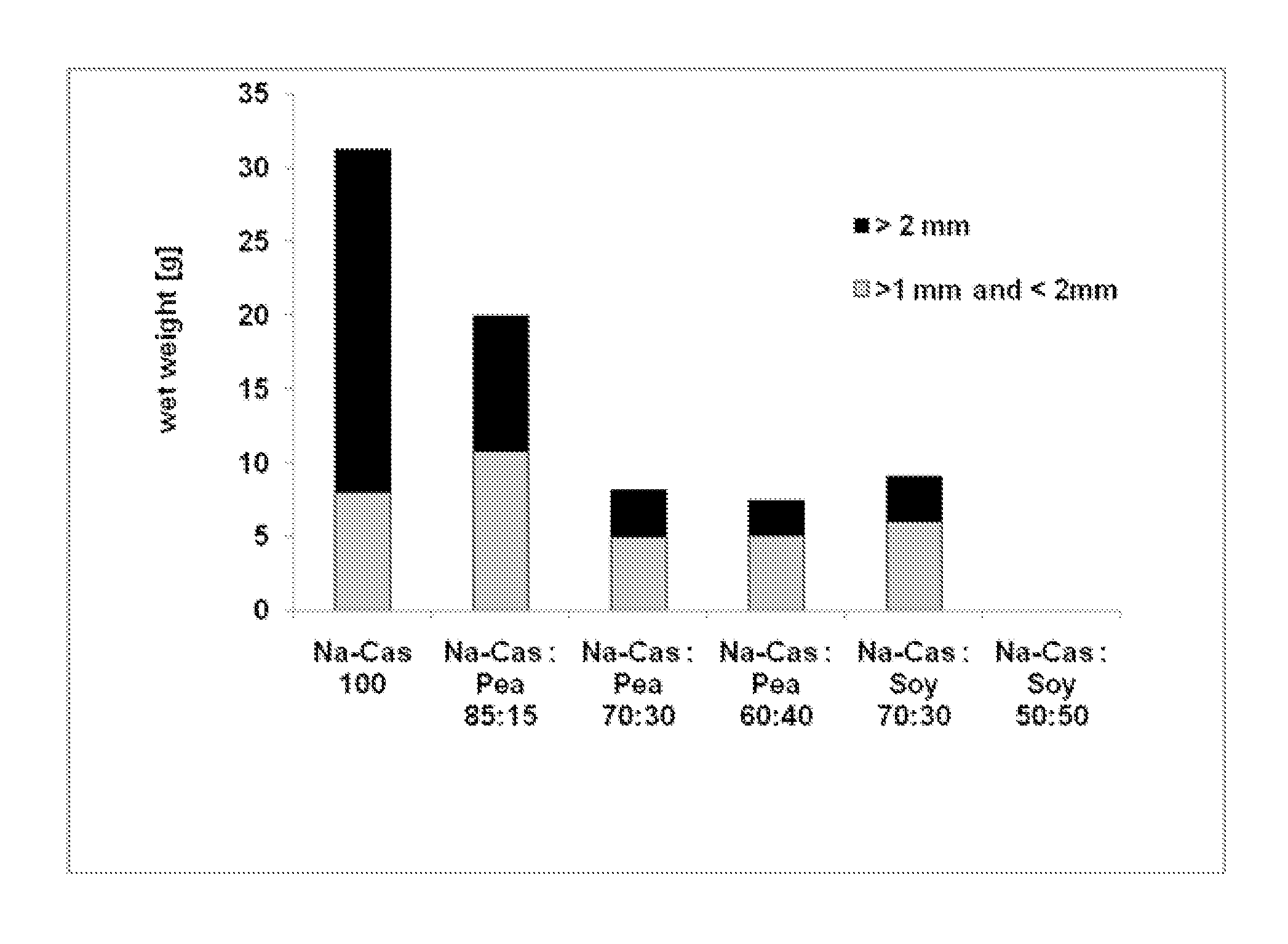Method for controlling the digestive coagulation of proteins
a protein and digestive coagulation technology, applied in the field of protein containing nutritional compositions, can solve the problems of gastrointestinal discomfort, aspiration pneumonia, reflux, etc., and achieve the effect of reducing coagulation and coagulation
- Summary
- Abstract
- Description
- Claims
- Application Information
AI Technical Summary
Benefits of technology
Problems solved by technology
Method used
Image
Examples
example 1
Experimental Study Outline
[0054]The coagulation properties upon gastric digestion were investigated for a solution of 100% sodium caseinate and solutions of protein mixtures with representative ratios of sodium-caseinate to pea protein of 85:15, 70:30, and 60:40, and for protein mixtures with representative ratios of sodium-caseinate to soy protein of 70:30, and 50:50 with 6% protein (w / v).
[0055]Stomach digestion was mimicked over 100 minutes in a computer controlled substrate pump setup (Multifermentor fed-batch; DASGIP AG, Juelich, Germany) at 37° C. upon continuous stirring.
[0056]For each experiment, 150 ml of protein solution were used as the starting volume. Per experiment, a total of 45 ml of artificial stomach juice (50 mM NaCl, 15 mM KCl, 1 mM CaCl2.H2O, 15 mM NaHCO3, 0.014% (w / v) pepsin (porcine stomach, sigma p7012), 0.019% (w / v) lipase (Rhizopus oryzae, DF 15K Amano Pharmaceutical Co, Ltd Nagoya); pH 4.0) was added. The stomach juice was added in two step...
PUM
| Property | Measurement | Unit |
|---|---|---|
| weight % | aaaaa | aaaaa |
| weight % | aaaaa | aaaaa |
| weight % | aaaaa | aaaaa |
Abstract
Description
Claims
Application Information
 Login to View More
Login to View More - R&D
- Intellectual Property
- Life Sciences
- Materials
- Tech Scout
- Unparalleled Data Quality
- Higher Quality Content
- 60% Fewer Hallucinations
Browse by: Latest US Patents, China's latest patents, Technical Efficacy Thesaurus, Application Domain, Technology Topic, Popular Technical Reports.
© 2025 PatSnap. All rights reserved.Legal|Privacy policy|Modern Slavery Act Transparency Statement|Sitemap|About US| Contact US: help@patsnap.com

